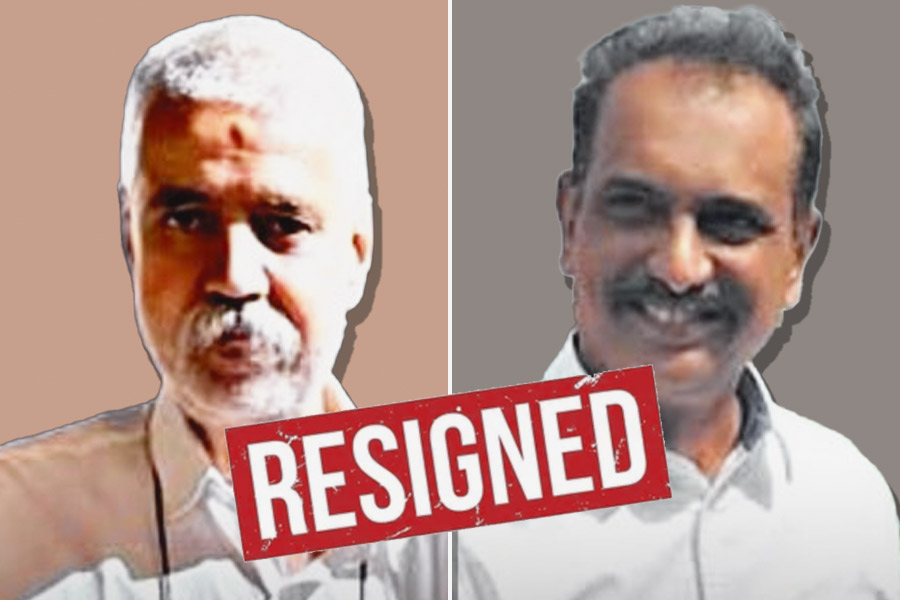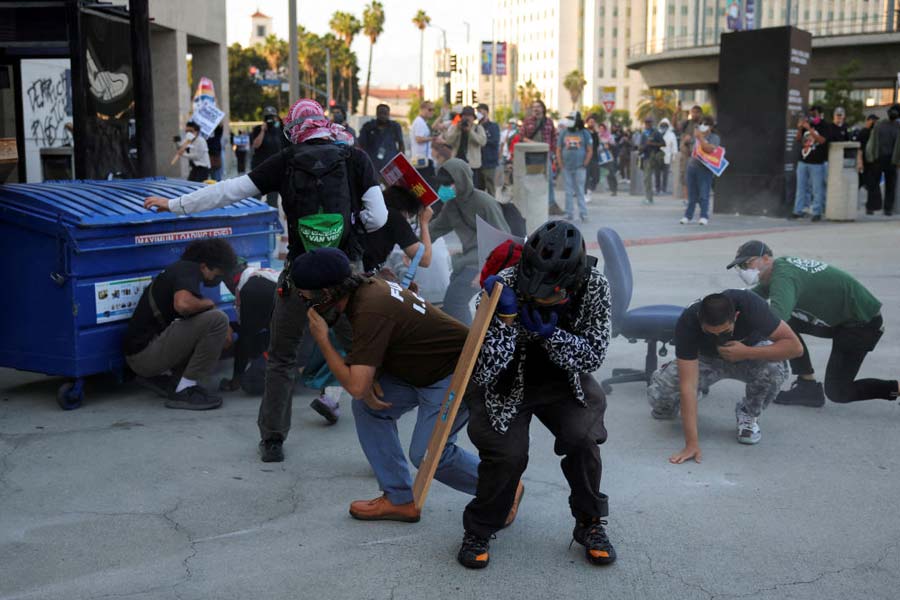
It is murder, if the intentional infliction of bodily injury is sufficient in the ordinary course of nature to cause death. In 2011, a day before her engagement ceremony, 23-year-old Soumya was injured, raped and robbed. She died a few days later, in a hospital, having never regained consciousness. Death was occasioned by a “combination” of two injuries — the first injury and the second injury — and complications that arose from subsequent sexual assault.

Neither of the two injuries nor the sexual assault was sufficient alone, in the ordinary course of nature, to cause death. The second injury could not be ascribed to the accused. For want of that ascription, unfulfilled “combination”, the breakage in the chain of causation, the Supreme Court ruled out murder in Govindaswamy vs The State of Kerala [Criminal Appeal Nos. 1584-1585 of 2014], pronounced on September 15 this year. A death penalty handed by the trial court and confirmed by the high court was set aside. Aggrieved, Soumya’s mother has filed a review petition before the SC.
Old arguments are not enough to reopen concluded adjudications. A review is not maintainable unless the material error, manifest on the face of the order, undermines its soundness or results in a miscarriage of justice. Govindaswamy, the appellant-accused, still carries a “life imprisonment”. For those against death penalty laws, life imprisonment is sufficient justice. It is my prediction, however, that the setting aside of Govindaswamy’s conviction for murder, that in turn set aside the order of his death, will continue to haunt our jurisprudence for sometime.
Since the matter turned on the second injury, it is of special interest. Soumya’s head was repeatedly banged against the walls of a train compartment — that was the first injury. Later, she either jumped off the train or was pushed out by the accused. The train had negligible speed. At any rate, her fall caused the second injury. The SC considered, unless the fall from the train could be ascribed to the accused on the basis of cogent and reliable evidence, meaning thereby that “the accused had pushed the deceased out of the train and the possibility of the deceased herself jumping out of the train was ruled out”, the liability of the accused for the injury could not necessarily follow. The State attempted to argue that in view of the first injury and the “impaired mental reflexes” of Soumya, she could not have taken the decision to jump. While the SC accepted that the proposition was not “necessarily incorrect”, it attached greater weight to the evidence of two “chance witnesses”. Prosecution witness No. 4 and prosecution witness No. 40, travelling on the same train, had heard and believed a “middle-aged man” that Soumya had jumped on her own.
Hearsay evidence does not derive its value solely from the credit given to the witness himself, but rests also, in part, on the veracity and competence of some other person. Hearsay evidence is excluded on the ground that it is always desirable, in the interest of justice, to get the person whose statement is relied upon into court for his examination in the regular way, in order that many possible sources of inaccuracy and untrustworthiness can be brought to light and exposed, if they exist, by the test of cross-examination [Kalyan Kumar Gogoi vs Ashutosh Agnihotri, (2011) 2 SCC 532]. It is absurd that that “middle-aged man” was never brought to trial, even as the reliance on his word by prosecution witness No. 4 and prosecution witness No. 40 has trumped medical opinion before the highest court of the land.
The allergy to hearsay evidence is, of course, not always justified. It may be accepted under certain circumstances [State of Haryana vs Rattan Singh, AIR 1977 SC 1512]. All the more reason it was important to take note of prosecution witness No. 47, who conducted the potency test of the accused. The accused had fairly confessed to prosecution witness No. 47 to have pushed out Soumya off the train. Extra-judicial confessions made to a doctor can be accepted provided there is no evidence at all to suggest that any policeman was present when the accused made the confessional statement before the doctor [M.A. Antony vs State of Kerala, (2009) 6 SCC 220].
The two lower courts relied on the extra-judicial confession made by the accused to prosecution witness No. 47 and considered the same admissible, voluntary and made without any coercion, undue influence or threat. Discarding the evidence of prosecution witness No. 47 at the altar of the hearsay evidence of prosecution witness No. 4 and prosecution witness No. 40 is another absurdity of the judgment in Govindaswamy. The SC failed to interpret crucial oral and documentary evidence on record.
Even if Soumya had jumped out of the train, there was no breakage in the chain of causation of bodily injuries on her, by the accused. Injuries, that were sufficient to lead to her death in the ordinary course of nature. That is murder. Soumya did not break the causal chain when jumping off the moving train to protect herself from sexual assault. According
to Mrinal Satish, associate professor of law, and executive director, Centre for Constitutional Law, Policy, and Governance, National Law University, Delhi, “there is sufficient case law to back such argument”.
All of this should be considered in Soumya’s mother’s review petition, that was last heard on October 17. Something interesting happened on that date. The SC, exercising epistolary jurisdiction, converted former SC judge Markandey Katju’s Facebook post, dated September 16, 2016, into a suo motu review petition. It was noted in his post too that, “The Supreme Court has grievously erred in law by not holding Govindaswamy guilty of murder… It is regrettable that the Court has not read Section 300, IPC carefully… The judgment needs to be reviewed in an Open Court...” Notice has been issued to Justice Katju, for November 11, 2016, to “participate in the proceedings”. There is a clear bar to that participation in view of Article 124(7) of the Constitution of India, 1950.
Will SC’s order serve as a precedent for former SC judges defending their written advice, to a party, in open court? One hopes that Justice Katju’s involvement does not denude the focus on whether or not Govindaswamy murdered Soumya. That the SC is giving it importance is undoubted. We shall wait for the story to unfold further.
Ray practices law in Delhi and Calcutta











